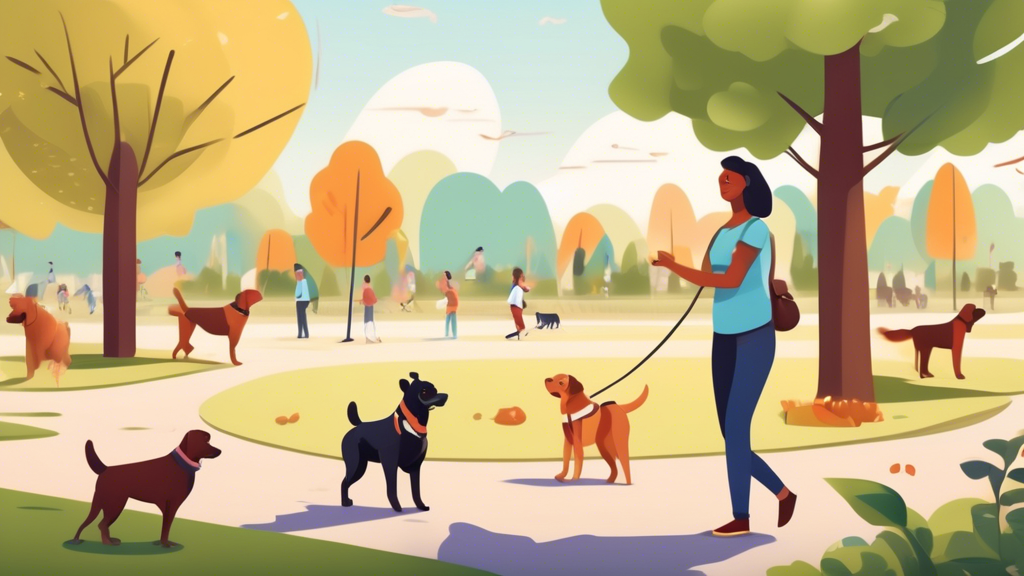Introduction to Off-Leash Dog Training
Training your dog to behave off-leash is one of the most liberating and gratifying experiences for both owner and pet. It not only promotes physical activity and mental stimulation but also strengthens the bond between you and your furry companion. However, this freedom comes with responsibility and necessitates a high level of discipline and trust.
Why Off-Leash Training is Important
Off-leash training is not just a luxury but a crucial aspect of a well-rounded dog training regimen. Here are some key reasons why it is essential:
- Enhanced Safety: Training your dog to heed commands without a leash could be a lifesaver in hazardous situations, like when encountering traffic or dangerous animals.
- Physical Exercise: Off-leash activities allow for more vigorous and natural forms of exercise, helping to maintain your dog's physical and mental health.
- Socialization: Off-leash settings often mean more interactions with other dogs and humans, which is beneficial for your dog's social skills.
- Stronger Bond: The trust and communication required for off-leash training contribute to a deeper bond between you and your canine friend.
Pre-Requisites for Off-Leash Training
Before you embark on off-leash training, there are some foundational skills your dog should master:
Reliable Recall
Ensure your dog responds consistently to the come command. Practice in various environments and gradually introduce distractions to cement this behavior.
Basic Commands
Your dog should be proficient in basic commands such as sit, stay, heel, and leave it. Compliance with these commands in a controlled environment forms the basis for off-leash reliability.
Techniques for Successful Off-Leash Training
Start in a Controlled Environment
Begin training in a fenced yard or an enclosed park. This reduces the risk of your dog running off while still allowing for some freedom.
Use Long Leashes
Start with a long leash (about 20-30 feet) so your dog can wander further from you while you still maintain control. This helps simulate the off-leash experience while providing a safety net.
Positive Reinforcement
Utilize treats, praise, and toys as rewards for obeying commands. The instant positive feedback helps your dog understand what behaviors are desired.
Gradual Increase in Freedom
Slowly increase the duration and complexity of off-leash sessions. Start with short distances and fewer distractions, and gradually expand the scope as your dog becomes more reliable.
Practice Distraction Training
Introduce distractions gradually, such as other dogs, children playing, or busy streets. Reward your dog for maintaining focus and obeying commands despite these distractions.
Consistency is Key
Consistency in commands and rewards is crucial for off-leash success. Ensure all family members use the same commands and reward system to avoid confusion.
Safety Tips for Off-Leash Training
ID Tags and Microchips
Always have your dog wear an ID tag and consider microchipping as a precaution. In the unlikely event that your dog gets lost, these measures can help facilitate a quick reunion.
Evaluate the Environment
Assess the area for potential hazards such as busy roads, wildlife, and unfriendly dogs before letting your dog off-leash. Choose safe, familiar places initially until both you and your dog are more confident.
Stay Vigilant
Even a well-trained dog can get distracted. Keep an eye on your dog at all times and be ready to intervene if necessary.
Common Challenges and Solutions
Ignoring Commands
If your dog starts ignoring commands, go back to basics. Practice commands in controlled environments and slowly reintroduce distractions.
Chasing Instincts
Dogs have a natural instinct to chase. To mitigate this, practice the leave it command extensively and reward compliance.
Anxiety and Overexcitement
Manage your dog's excitement by practicing calming techniques and ensuring they get ample exercise before off-leash sessions.
Conclusion
Mastering off-leash dog training techniques is a gradual process that requires patience, consistency, and commitment. The rewards, however, are invaluable—a well-behaved, happy dog and the joy of exploring the world together without constraints. Remember, the journey to off-leash freedom is a shared experience that will deepen the bond with your four-legged friend.

